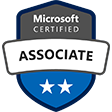Course Overview:
In this course, students learn the IPv6 protocols & processes & describe how IPv6 is supported in the latest versions of Microsoft Windows operating system. Students will also learn how to describe transition technologies that allow you to deploy IPv6 in IPv4 intranets & across the IPv4 Internet.
Attendees to TN-395: Internet Protocol Version 6 (IPv6) will receive TechNow approved course materials and expert instruction.
Dates/Locations:
No Events
Duration: 5 Days
Course Objectives:
- Learn how to create IPv6 networks with Cisco Systems products
- Supplement your IPv6 course with a self-study guide based on the course materials
- Understand practical applications of IPv6 through a solutions-oriented writing approach
- Increase comprehension & retention through chapter tools like objectives, summaries, scenarios & review questions
- Features & benefits of IPv6
- IPv6 in the Windows Server2003 Family
- IPv6 addressing & the IPv6 header
- Internet Control Message Protocol for IPv6 (ICMPv6)
- Neighbor & multicast listener discovery
- Address auto configuration
- IPv6 name resolution & routing
- Coexistence & migration
- IPv6 mobility
Prerequisites:
- Students should have a working knowledge of a Windows OR Unix Operating system.
- In addition, the student should also have basic end-user skills in TCP/IP.
Comments
Latest comments from students


